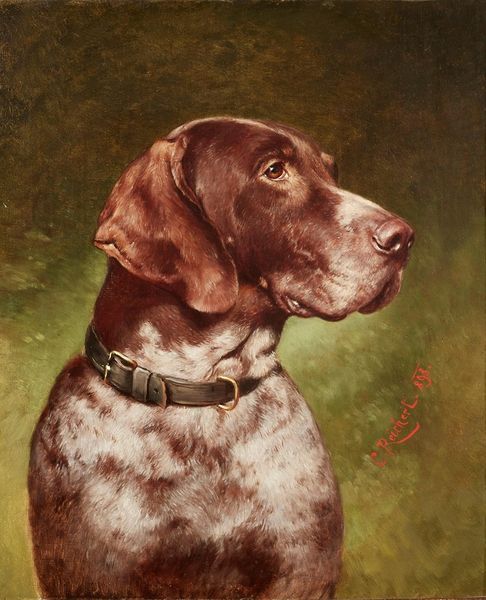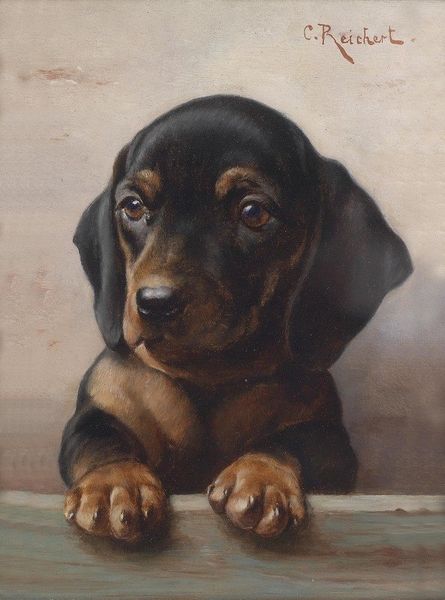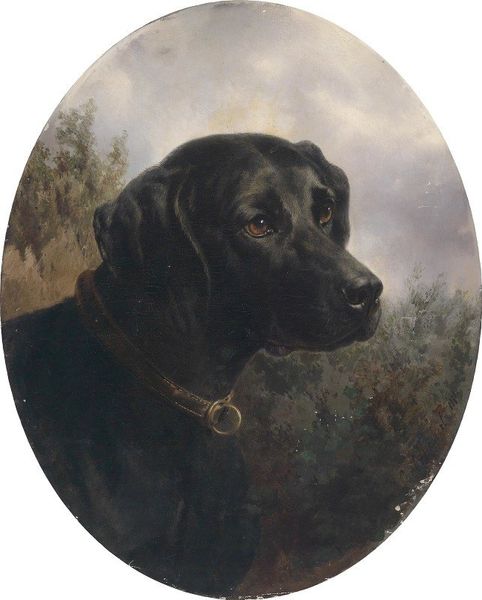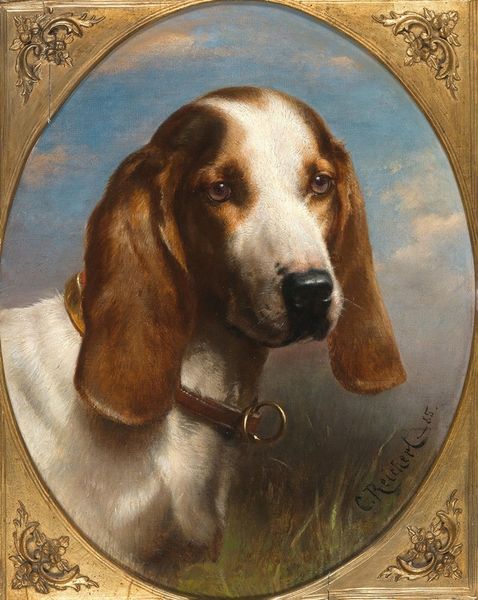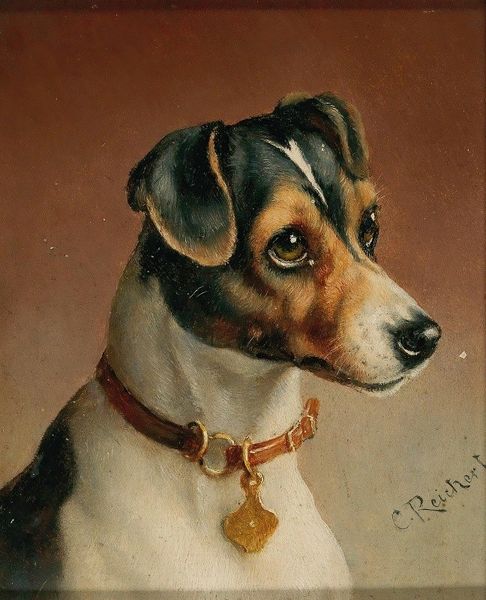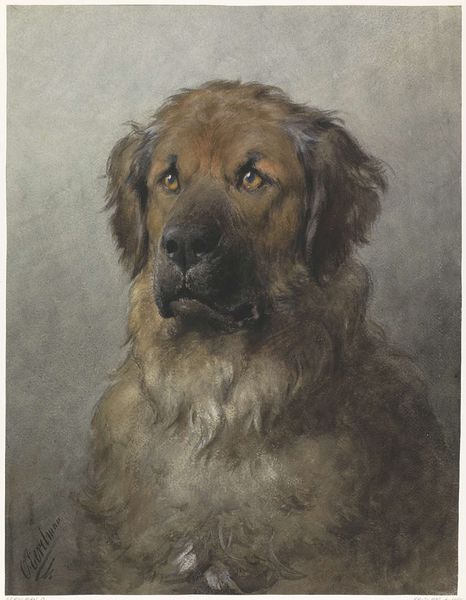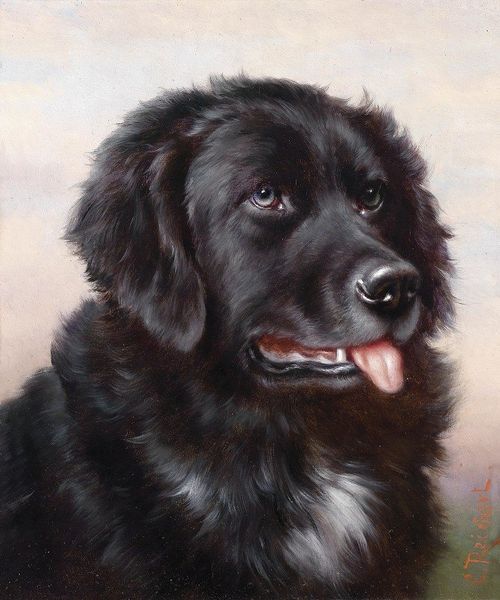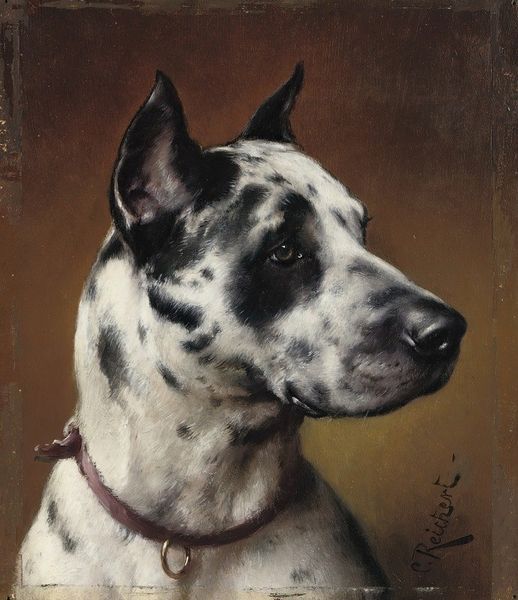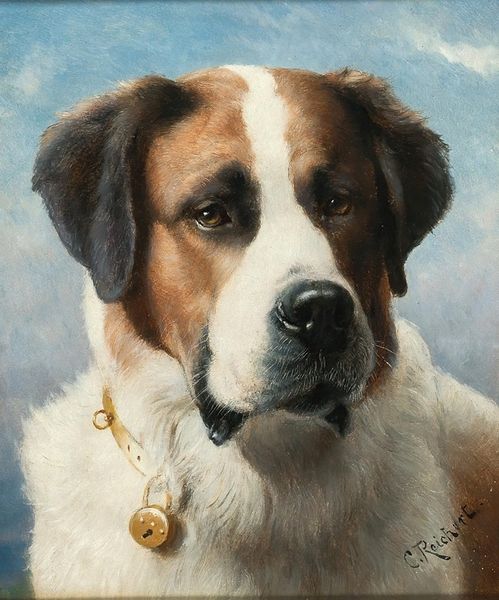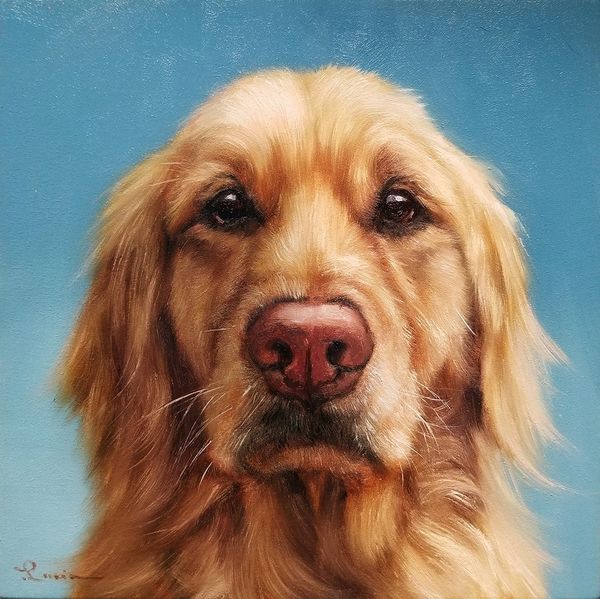
painting, oil-paint
#
portrait
#
painting
#
oil-paint
#
oil painting
Copyright: Public Domain: Artvee
Editor: Here we have "Hundeportrait," an oil painting, likely from the 19th century, by Carl Reichert. It's a charming dog portrait. I’m immediately drawn to how Reichert captured the texture of the dog's fur with such fine detail. How do you interpret this work, focusing on its visual elements? Curator: Focusing on purely formal aspects, the painting operates through a sophisticated use of chiaroscuro. Observe the light falling predominantly on the upper part of the dog's head, contrasting with the shadows underneath. This is used to give three-dimensionality. Editor: Yes, I see how the light and shadow create such depth! Also, the cool blues in the background really make the dog's warm brown tones stand out. It’s a very simple composition, but it's striking. Curator: Indeed. The restrained palette is integral to its success. Notice how the artist contrasts the browns of the coat and collar against the delicate application of diluted blues that define the composition and set off the color and texture of the animal subject. What is the effect of this limited palette on you? Editor: It feels very classic and almost calming. There’s no distraction, and I am more focused on the subtle changes in the texture of the fur and how the artist blends colors so naturally. Curator: Exactly. This harmonious chromatic approach, along with the focus on mimetic representation through the rendering of texture and three-dimensionality, invites reflection on the very essence of portraiture within painting. Editor: It's interesting how much we can appreciate from just the technical elements and composition. I hadn't fully appreciated it before looking at it this way! Curator: Quite right, understanding composition offers the tools for unlocking new aspects of artworks.
Comments
No comments
Be the first to comment and join the conversation on the ultimate creative platform.
